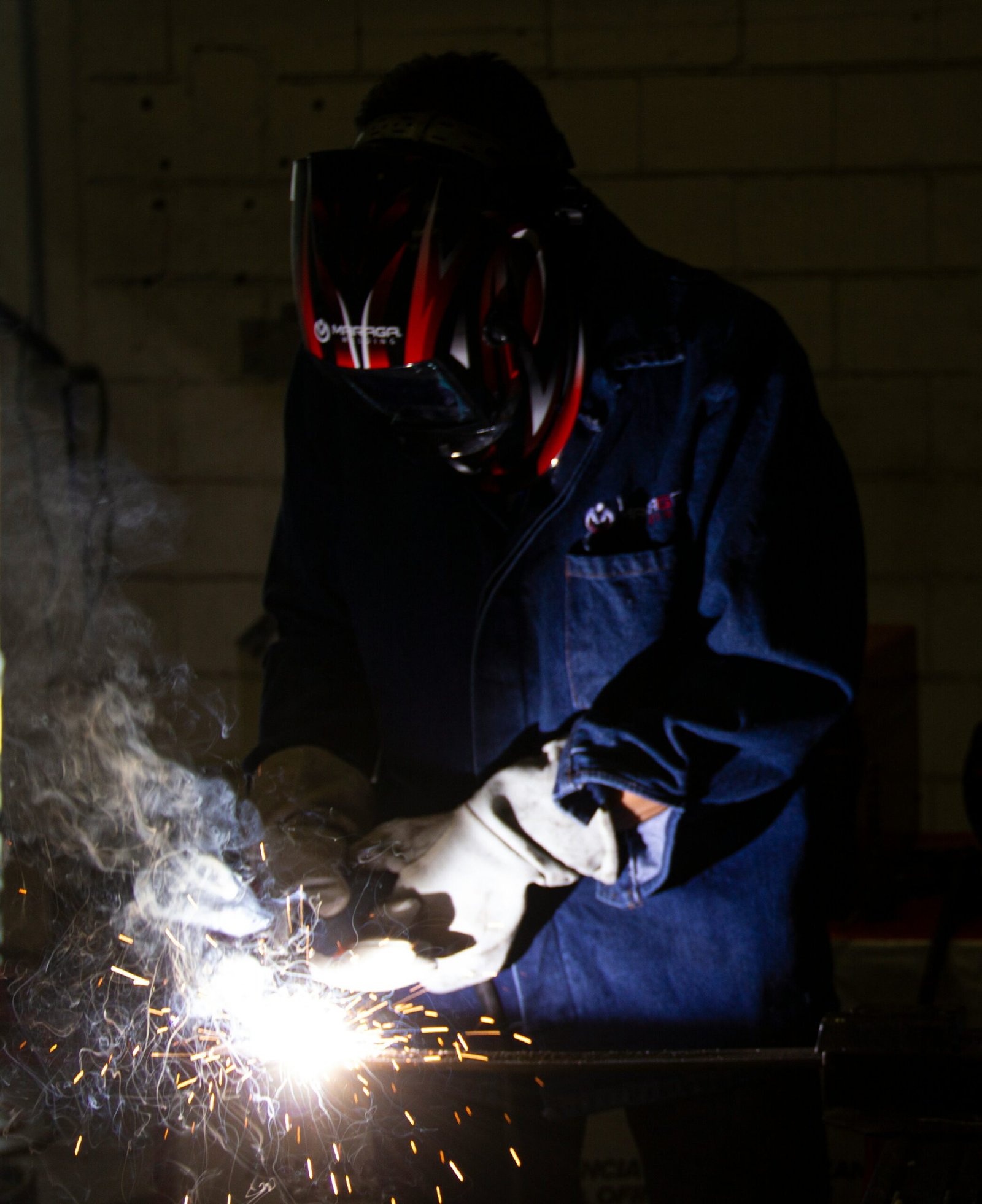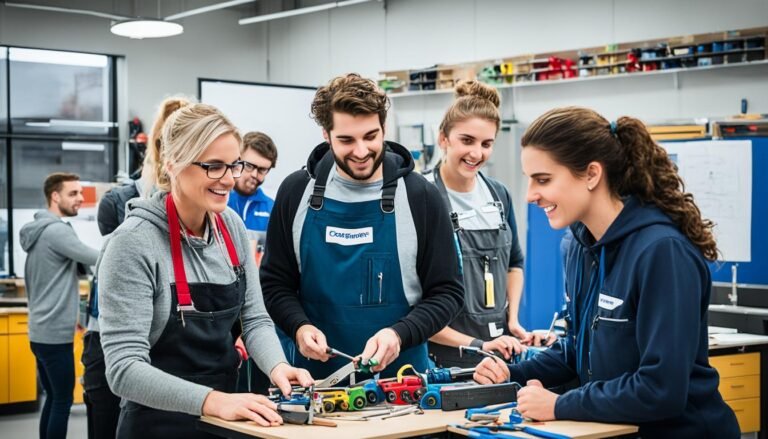Welding Vocational Training Overview
Thinking about a career in welding? Vocational training can give you the skills and know-how to make it happen. Here’s a rundown of what to expect from welding vocational training, including how long it takes and what you’ll learn.
Program Duration and Benefits
You can wrap up a welding training program in about nine months, getting you into the workforce fast (MIAT College of Technology). The exact time can vary depending on the program and how deep you want to go.
These programs are all about hands-on learning. You’ll get to work with different welding techniques and gear, building a solid skill set for real-world welding jobs. Plus, many programs have ties to the industry, offering internships or apprenticeships that can boost your skills and help you make valuable connections.
Essential Skills Taught
Welding vocational training covers a bunch of key skills you’ll need on the job. Here’s a peek at what you’ll learn:
-
Tool Handling: You’ll get the hang of using various welding tools and equipment safely. This includes different welding machines, electrodes, and protective gear.
-
Professional Skills: Beyond welding, you’ll pick up important skills like communication, teamwork, problem-solving, and time management. These are crucial for working well with others and getting the job done right.
-
Metal Arc Welding: You’ll dive into different metal arc welding techniques like shielded metal arc welding (SMAW), gas metal arc welding (GMAW), and flux-cored arc welding (FCAW). You’ll learn to set up and maintain welding equipment, read welding symbols, and weld different materials.
-
Reading Blueprints: Understanding welding blueprints and equipment drawings is a must. You’ll learn to read technical drawings, identify welding specs, and apply them to your projects.
-
Metal Properties: You’ll get to know different metals, their properties, and how they behave during welding. This helps you choose the right techniques, settings, and materials for the job.
-
Pipe Welding: Many programs also teach pipe welding. You’ll learn to weld pipes of various materials and sizes, including how to prep joints, align pipes, and weld in different positions.
With these skills under your belt, you’ll be ready to jump into the welding industry with confidence. For more info on vocational training programs near you, check out our article on vocational training near me.
Next up, we’ll look at the different career paths in welding, including job outlook, salary potential, and industry demand.
Career Opportunities in Welding
Thinking about a career in welding? You’re in luck! Welding skills are hot right now, and there’s a ton of job openings across different industries. It’s a solid choice if you’re looking for a hands-on job that pays well.
Job Outlook and Salary
Welders are in high demand, and it’s not slowing down anytime soon. The American Welding Society says there’s a huge need for skilled welders, with over 42,000 job openings popping up every year in the U.S..
On the money side, welders make a decent living. The median annual wage for welders, cutters, solderers, and brazers was $48,940 in May 2023. But, your paycheck can vary depending on your experience, who you work for, and where you live. On average, welders make about $30 an hour. If you’re in California, you might even rake in more.
Industry Demand and Specializations
Welding isn’t just for one type of job. It’s needed everywhere—from building skyscrapers to fixing cars. Here are some cool specializations you can dive into:
- Pipe Welding: These folks work in oil and gas, plumbing, and construction. They make sure pipes are welded right so they don’t leak.
- Structural Welding: These welders build big stuff like buildings and bridges. They work with heavy materials to make sure everything is solid.
- Underwater Welding: Yep, you read that right. These welders work underwater, fixing things like ships and pipelines. It takes extra training, but it’s pretty awesome.
If you’re looking to make the big bucks, check out jobs in electric power generation, transmission, and distribution (UTI). These jobs are usually at power plants that run on coal, petroleum, or natural gas.
So, if you’re thinking about welding, you’re looking at a career with a bright future, good pay, and lots of options. Get the right training, and you’ll be set.
Want to know more about vocational training programs and schools? Check out our articles on vocational training, vocational schools, and vocational training near me.
Types of Welding Training Programs
Thinking about a career in welding? There are a bunch of training programs out there to get you started. These programs teach you everything you need to know to become a welding pro. Let’s break down two popular options: vocational schools and community colleges, plus apprenticeships and specialized institutes.
Vocational Schools and Community Colleges
Vocational schools and community colleges offer welding programs that give you a solid start. These programs usually last from 9 months to 2 years, depending on what certification you’re aiming for. Some even let you earn an associate degree, mixing general education with welding-specific training (PrimeWeld).
Going to a vocational school or community college has its perks. They often have top-notch welding labs where you can practice different techniques and use various equipment. Plus, the instructors are seasoned pros who can guide you every step of the way.
In these programs, you’ll learn the basics of welding, safety procedures, blueprint reading, and welding theory. Graduates are ready to jump into the workforce as entry-level welders or go for more certifications and specializations. Want to find a program near you? Check out our article on vocational training near me.
Apprenticeships and Specialized Institutes
Another way to learn welding is through apprenticeships and specialized institutes. Apprenticeships let you work alongside professional welders, getting hands-on experience and one-on-one training. These programs usually last three to four years and end with a “journeyman” designation and full certification.
Apprenticeships are great because they give you real-world experience, which is highly valued in the welding industry. This can open up some fantastic career opportunities.
Specialized institutes focus only on welding and offer in-depth training in various techniques. These places often have cutting-edge facilities and equipment for hands-on learning. Some even use cool tech like virtual reality (VR) welding simulators and augmented reality (AR) training to make learning more immersive.
Whether you choose an apprenticeship or a specialized institute, you’ll get thorough training that can lead to a successful welding career. These programs combine practical skills with theoretical knowledge, giving you the expertise to excel in the industry.
Picking the right welding training program depends on your career goals, how much time you have, and what you prefer. Do your homework and consider things like program length, curriculum, facilities, and reputation when choosing a program that fits your dreams. Investing in the right training program will set you up with the skills and qualifications you need to thrive in welding.
Fresh Training Techniques
As tech keeps zooming ahead, welding training isn’t stuck in the past either. It’s now using some pretty cool methods to make learning more fun and effective. Two standout techniques are virtual reality (VR) welding simulators and augmented reality (AR) training tools.
Virtual Reality (VR) Welding Simulators
Imagine practicing welding without the burns and sparks. VR welding simulators let students do just that. They create a safe, virtual space where you can hone your skills without the usual risks. It’s like a video game, but for learning welding. These simulators feel so real that students can almost forget they’re not actually welding, making it easier to grasp the techniques.
One big plus of VR welding simulators is they save money. No need to buy metal, rods, or gas. Over time, this means big savings for schools. Plus, these simulators can fit right into a classroom, so students can practice no matter where they are (LinkedIn).
Another cool feature is the instant feedback. Advanced sensors and analytics tell students right away what they did right or wrong. This helps them learn faster and get better quicker.
Augmented Reality (AR) Training Tools
AR training tools take things up a notch by mixing the real world with digital info. Using special headsets or even just a smartphone, students can see digital instructions and guides right on their workpiece or equipment. It’s like having a welding coach right there with you, showing you what to do step by step.
With AR, students can get a better grip on welding techniques, hit the mark more often, and work more efficiently. Trainers can even offer real-time help from afar, making AR perfect for remote learning.
Both VR and AR are shaking up how we train future welders. By using these tech tools, training programs can offer a safer, more engaging, and super effective learning experience.



